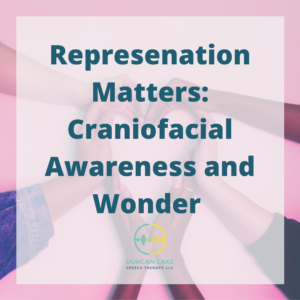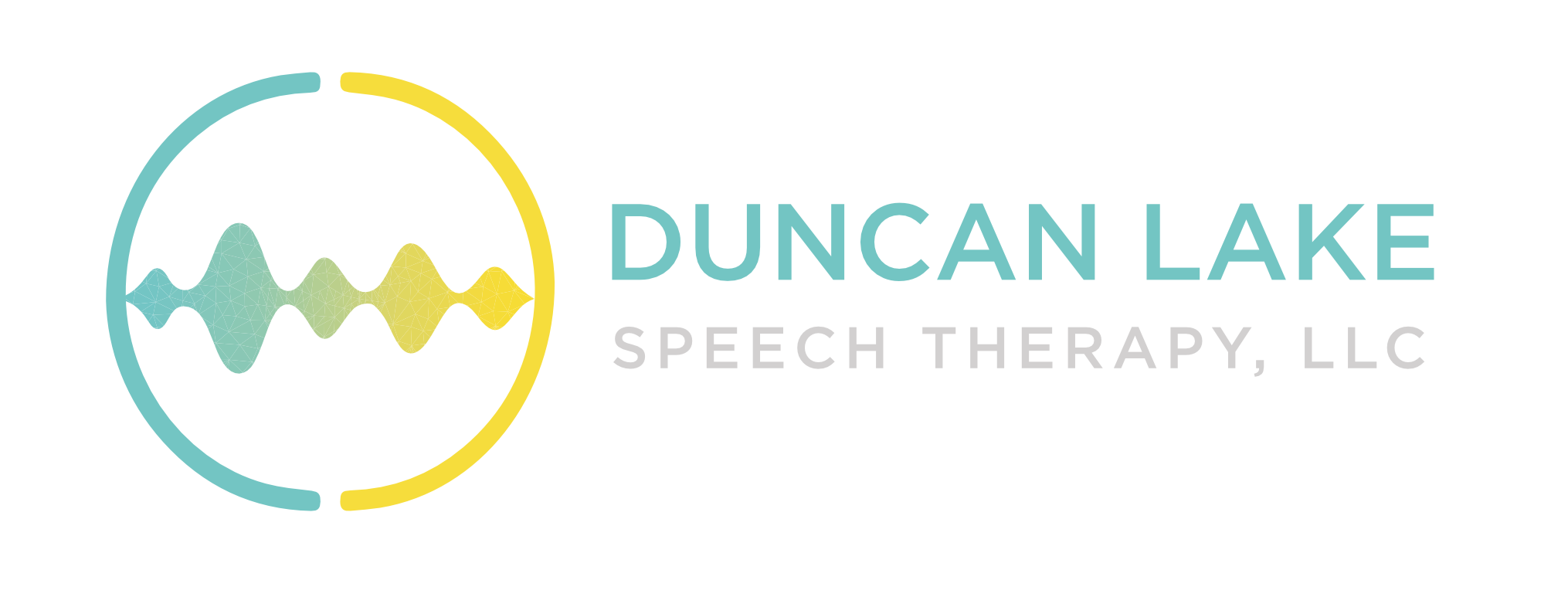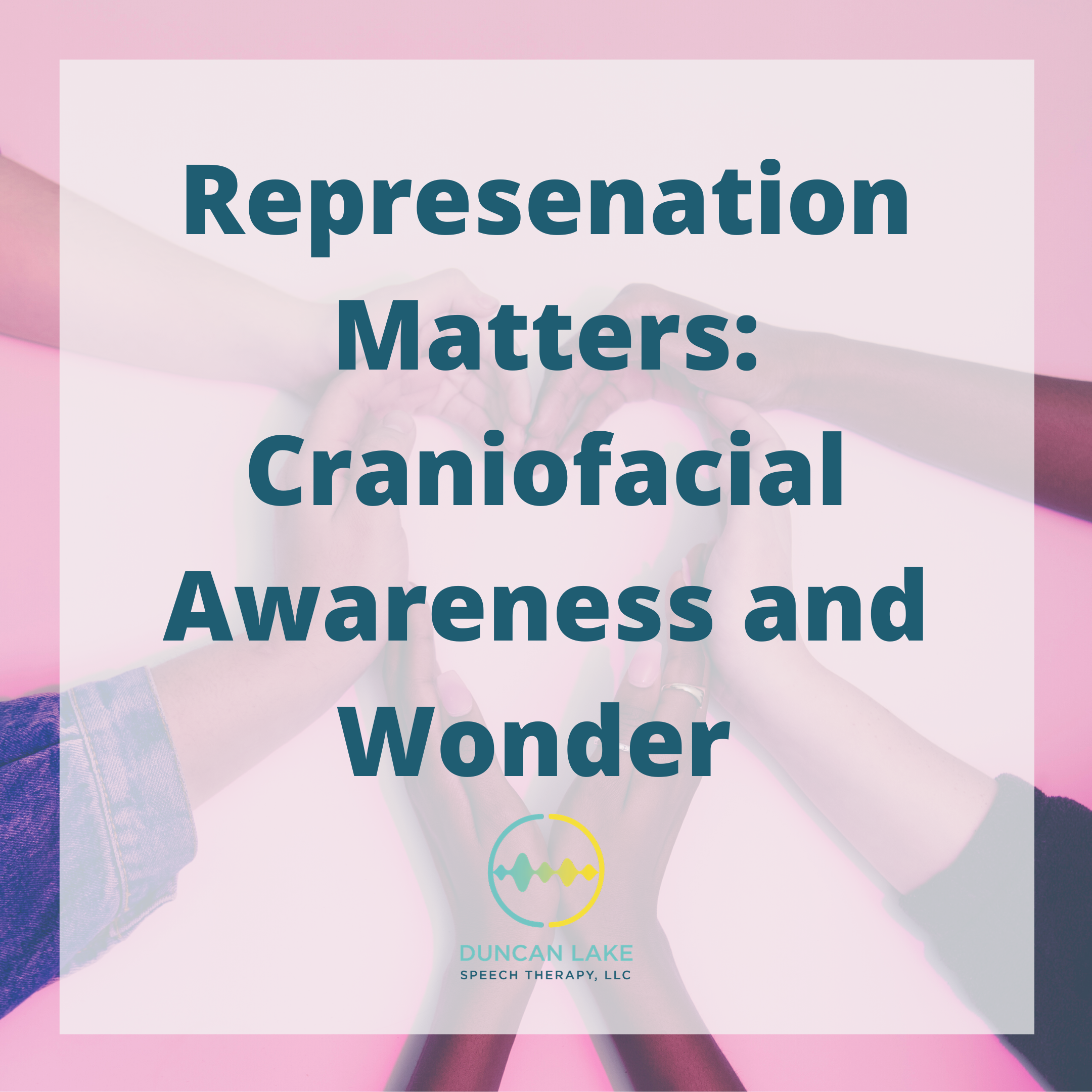This week, we’re very happy to welcome the Duncan Lake Speech Therapy summer graduate intern, Katrina Beals, to the blog. As you know, DLST believes in better representation, inclusion, and accessibility in all aspects of life. Today, Katrina talks with us about representation, specifically as it relates to craniofacial anomalies and one of my favorite books/movies, Wonder. Take it away, Kat!
***
Happy Cleft and Craniofacial Awareness month! Did you know that approximately 600,000 individuals in the United States have a craniofacial condition? By definition, craniofacial anomalies are malformations of the bones that make up the head and face. Some examples of craniofacial disorders include cleft lip/palate, positional plagiocephaly, craniosynostosis, hemifacial microsomia and Treacher Collins syndrome.
It seems that as of lately, the spotlight has been on representation (or the lack of) in Hollywood, in the media, in children’s toys, in band-aids, etc. Overall, this lack of representation does not only apply to individuals from diverse racial and cultural backgrounds but also to individuals with disabilities.
 Recently, I, like many of you, have found a little bit of extra time in my schedule. In pre-corona days, this was time that I spent jamming out to some oldies while commuting from place to place. Anyway, in this newfound time, I discovered a few movies that I quickly added to my list of favorites. One of those movies, Wonder, based on the novel by RJ Palacio, I have admittedly watched at least three times. This movie is about August (nickname: Auggie), who has a craniofacial disorder. The movie depicts his wild journey of transitioning from home-school to 5th grade at a local elementary school.
Recently, I, like many of you, have found a little bit of extra time in my schedule. In pre-corona days, this was time that I spent jamming out to some oldies while commuting from place to place. Anyway, in this newfound time, I discovered a few movies that I quickly added to my list of favorites. One of those movies, Wonder, based on the novel by RJ Palacio, I have admittedly watched at least three times. This movie is about August (nickname: Auggie), who has a craniofacial disorder. The movie depicts his wild journey of transitioning from home-school to 5th grade at a local elementary school.
In this movie, Auggie wears an astronaut helmet because he is worried about how others will perceive his differences. What is interesting is that the entire movie builds upon a foundation of inclusion and acceptance and yet, the actor who plays Auggie (Jacob Tremblay) does not actually have a craniofacial disorder. After finding this out, my question is why? Why did the producers and directors involved in creating Wonder decide against using an individual who has been diagnosed with a craniofacial disorder? A person who actually has lived the exact experience that they wish to portray in this movie? It feels contradictory/hypocritical that the very cast members involved in the making of this movie do not embody the very message that they are working so hard to convey.
In other words, it would be willfully ignorant to assume that out of the 600,000 individuals diagnosed with a craniofacial disorder living in the United States, not a single one of those individuals was interested in and/or qualified to play the role of Auggie.
Representation matters. Why? The Chicago Lighthouse organization perfectly explains this as, “positive and realistic portrayals will help create more awareness and opportunity for all people with disabilities”. Not only will representation help to create more awareness, but it will also empower individuals with disabilities and demonstrate that the possibilities are endless.
Even though, in the recent weeks and months, it feels that society has made small gains, we still have work to do. If there is one message that I wish for you all to gain from reading this blog post, it is this: Representation Matters. Representation Matters. Representation Matters. Think about what each of those words mean to you separately and together. Moving forward, I personally am going to work towards being a better ally to marginalized populations and I encourage you all to do the same.
“If you want to tackle bias, rewire people’s brains with continuous, natural experiences with people who challenge their stereotypes.”
— Dr. Vivienne Ming
References
Children’s National Hospital. (2020). Craniofacial Disorder. Retrieved from https://childrensnational.org/visit/conditions-and-treatments/genetic-disorders-and-birth-defects/craniofacial-disorder
Diversability. (2019) Be an ally. Retrieved from https://mydiversability.com/be-an-ally
The Chicago Lighthouse. (2020). Media and People With Disabilities: Are We Represented Accurately? Retrieved from https://chicagolighthouse.org/sandys-view/media-and-people-with-disabilities/



Recent Comments